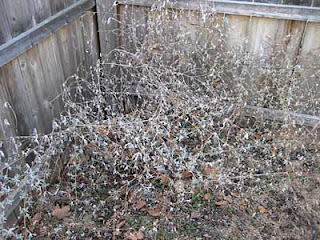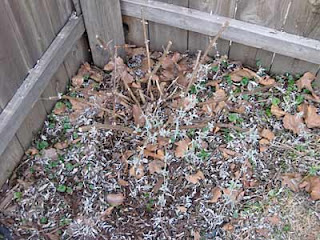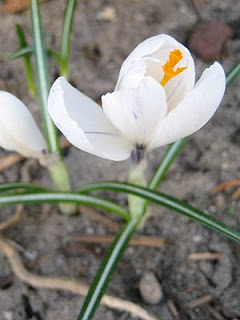When I began my attempt-at-gardening adventure, I asked my better half if he would like me to install certain models of plants into our lot. He is a great cook, so he requested some basic herbs he could walk outside and pick when required for his various kitchen masterpieces. Not a problem. Otherwise, he seemed indifferent.
That is, until he spotted the foxglove.
The foxglove was my introduction to the concept of a biennial. Annuals are good for one season unless they self seed. Perennials winter over and will come back in the spring. But biennials produce blooms every other year. I was happy to find out this was the reason the foxglove didn’t produce any flowers after I brought it home and planted it. I just hope it blooms this summer or both of us (him more than me) will be disappointed.
When reading up on foxglove, I discovered every part of the plant is very poisonous. Apparently there is a chemical in it that affects the heart. I’ll keep this in mind when I have our future four-legged foremen on the job in the garden with me.
Yet another interesting thing I found out about foxglove is this from the Horticulture at the University of Wisconsin site:
The foliage tends to be evergreen, so do not cut back in fall, but you can cut back any remaining flower stems down to the base. Prune off winter-damaged leaves in spring.
Here are some other plants on our lot which benefit from a spring versus fall pruning.
Astilbe Astilbe don’t require much maintenance. Fall clean-up is unnecessary and may weaken the plant’s tolerance for cold. Minimal spring clean-up is required.
Balloon Flower (Platycodon grandiflorus) If pruned for sturdiness, Balloon flower blooms late in the season and remains attractive until frost. Since it is late emerging in the spring, it helps to leave the old foliage as a marker.
Black-eyed Susan (Rudbeckia fulgida) Although not particularly attractive in winter, the seed heads will feed the birds.
Butterfly Bush (Buddleia davidii) To lessen winter kill, wait for signs of green at the base and then cut back to 6 – 10 inches.
Coral Bells (Heuchera) Heuchera are prone to heaving in soils that freeze and thaw. Leaving the foliage in tact helps to mulch the plants through winter.
Hosta Although Hosta foliage gets ugly over winter, some Hosta varieties can be damaged by spring frosts and benefit from the protection of the collapsed foliage.
Lady’s Mantle (Alchemilla mollis) Lady’s Mantle doesn’t really like to be sheared back frequently. Occasional shearing or selective deleafing may be necessary because of sun scorch, but Lady’s Mantle will over winter better if left in tact and cleaned up in the spring.
Lamb’s Ear (Stachys byzantina) There’s no point in trying to clean up Lamb’s Ear for the winter. Let it be and remove winter damage when the leaves perk up in the spring.
Lavender (Lavandula) Many areas have a hard time over-wintering lavender. The problem is more often moisture than cold, but cold is a factor. Don’t prune lavender late in the season, as new growth is extremely cold sensitive. Wait until new growth appears in the spring before removing winter die back.
Lupine (Lupinus) Lupines are temperamental, short-lived perennials and they do not enjoy winter. Leave the foliage on for protection and hope for the best come spring.
Plumbago (Ceratostigma plumbaginoides) There’s not much left to this plant in winter. But many gardeners like to leave it standing so they’ll remember where it is, since it is late to emerge in the spring.
Russian Sage (Perovskia atriplicifolia) Like its cousin Lavender, Perovskia doesn’t like to be trimmed back in that fall, because it’s tender growth is too sensitive to cold. Wait until new growth appears in the spring and then cut back to about 6 – 8″. If the only new growth is from the base of the plant, the entire top woody section has died back and it can be pruned to the ground.
Sedum Many of the tall Sedums can remain attractive throughout the winter, even holding caps of snow on their flowerheads. ‘Autumn Joy’, in particular, holds up very well. The basal foliage appears very early in spring, so Sedum can be one of the first plants you prune in the spring.
For a full listing, look here.





